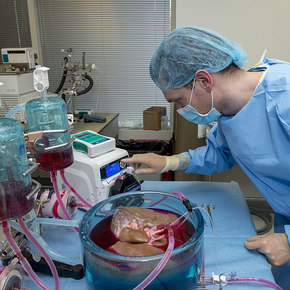Supercooling Breakthrough Triples Donor Liver Storage Time
 Sep-12-19
A breakthrough in supercooling technology dramatically extends the time donor livers can stay viable during transport to the recipient.
Sep-12-19
A breakthrough in supercooling technology dramatically extends the time donor livers can stay viable during transport to the recipient.Donor livers are kept at very cold temperatures during transport, but that temperature range must be kept above freezing to prevent damage to the organ—which also lessens the amount of time the organ can be safely preserved. A team from Harvard University has tripled that preservation time, however, by improving on a previous supercooling technique that was successful with rat livers but at the time could not be scaled up, since ice crystals would form in larger livers—such as the ones in humans. The Harvard method involves conditioning the livers with a preservative solution that is evenly delivered using machine perfusion, allowing the liver to be transported at below freezing (24.8 F) and extend the organ’s out-of-body time from nine to 27 hours.
More Info about this Invention:
[NIH.GOV][HMS.HARVARD.EDU]

Add Your Comment